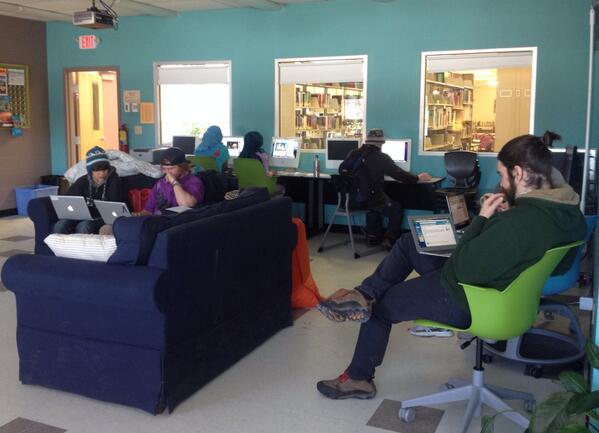Welcome back to #vted Reads!
In this episode, we’re talking about the comic memoir Hey, Kiddo. As we discuss Jarrett Krosoczka’s real-life story, we find empathy for young people living with the impacts of addiction and mental illness. And we explore other themes: how to really see kids, the importance of representation in books, and the power of flexible pathways.
Thanks for joining us. Let’s chat.
Jeanie: I’m Jeanie Phillips and welcome to #vted Reads. We are here to talk about for educators, by educators, and with educators.
Today, I’m with Mike Hill and we’ll be talking about Hey, Kiddo by Jarrett Krosoczka.
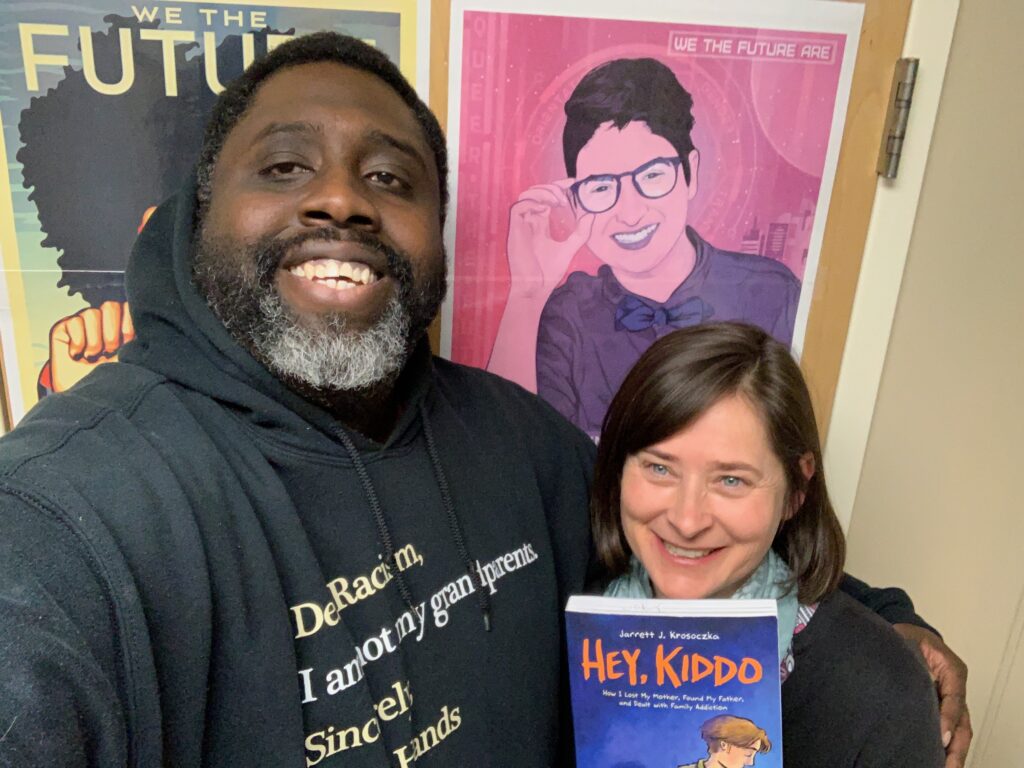
Thanks for joining me, Mike. Tell us a little bit about who you are and what you do.
Mike: Hi, Jeanie. My name is Mike Hill and I am the Student Assistance Program Counselor at Burlington High School. I’m honored to be such. My role definitely doesn’t describe what I do. As the Student Assistance Program Counselor, I provide intervention, prevention, and education support to faculty, staff, as well as the students and young adults at Burlington High School.
The supports I provide are around substance use issues and emotional mental health supports, and some academic supports.
Academic supports are usually around post-secondary navigation because I have some skills sets around that.
Jeanie: Excellent. You’ve got your hands full here.
Mike Hill: Yes. I’m a support staff person so I like to work very collaboratively with the school counselor department, the guidance counselor department, as well as the admin team, the student support staff team, anybody who needs support in the realm of substance use issues or education, emotional mental health supports.
I’m also a referral stream for the multiple mental health counselors and therapists that we have on campus internally. So we partner with special needs and family services, Riverstone Counseling, Centerpoint, Counseling Connections, and Howard Center School Clinicians. Yeah, I am just a collaborative support staff.
Jeanie: Just. Well, I’m really delighted to have you to help me talk about this book.
Hey, Kiddo has a subtitle that I think gives us a lot of clues about what it’s about: How I Lost My Mother, Found My Father, And Dealt With Family Addiction.
I wondered if you would introduce us to Jarrett because our writer and illustrator of this graphic novel, I’m going to backtrack on that.
“This Was a Book I Needed To Write” | SLJ talks with Jarrett J. Krosoczka On “Hey, Kiddo” https://t.co/wQ4ycOLDUg pic.twitter.com/kJvZylTnZJ
— SchoolLibraryJournal (@sljournal) January 29, 2019
My friend, Peter Langella at Champlain Valley Union High School, says we shouldn’t be calling them graphic novels, and it’s true for this one. It’s really a comic memoir. This is Jarrett talking about his own life.
Would you introduce us to Jarrett and tell us a little bit about how this book begins?
Mike: Sure. And I really like that actually comic memoir. It really is a comic memoir because Jarrett is a kid who turns into a youth and turns into a young adult. You get to see Jarrett grow up all the way through those stages of life. And like Jeanie speaks to, really that subtitle under Hey, Kiddo is illustrated beautifully through those stages of his development and his life.
So Jarrett is the kid who is taken from his mom because his mother deals with addiction via heroin, one of the most addicting substances that we come across as a society.
He is adopted by his grandparents, specifically by his grandfather. With that love, with that adoption, he’s raised by his grandparents.
His father has never been in his life. Long down in his life, he actually gets to meet his father but it’s not until his teenage years. Also in his life, he grows up with his grandparents and this is a different structured family unit. So, a lot of people we see on TV, we see mother/father, and that’s is a very heteronormative family unit. In reality in our society, we’re transitioning.
We need to start opening our minds a lot wider because that heteronormative family unit is not the “norm” anymore.
It is what Jarrett depicts in his graphic memoir.
Jeanie: I love that you bring that up Mike because really, one of the things that resonated for me in this book is that I’ve taught kids like Jarrett, kids who aren’t being raised by their parents. I’ve taught so many kids who are being raised by their grandparents and we make assumptions about what their life is like and it’s totally different.
I wonder if you could speak about the empathy that Jarrett provides for us in showing his life being raised not by the traditional or the -– I don’t love that word traditional, but the societal norm of a mother and a father.
Mike: Yeah. I think the empathy that’s shown or that we can grab from this graphic memoir is that we see it now more on documents when we see parents/guardians. We start to see that more on school documents, on official documents, on federal documents because we as a society are starting to realize that the societal norm is no longer the “societal norm.”
We’re starting to be more empathetic and be more aware that more youth and young adults are growing up with their grandparents and more youth and young adults are growing up in less heteronormative households.
We’re starting to gain a wider understanding around what a family unit can actually look like, not what it should “look like.”
I think Jarrett in his graphic memoir really increases that empathy. There was one section in the graphic memoir where his graduation dinner was happening and his grandparents asked, “Hey, so all the parents are going to that, right?” And he was slightly embarrassed because he was in middle school and he’s like, “Oh yeah, but you don’t have to go to it. It’s not a big deal.” And long story short, his grandparents’ feelings were hurt. And he went and spoke to, I think it was his aunt, and he was like, “I messed up big time, didn’t I?” She’s like, “Yeah, you did.”
Jeanie: She’s a good foil to him in that! She calls him on it, right?
Mike: Yeah, totally.
Jeanie: I was struck by that same passage. The thing I thought about is he’s ashamed that his mom isn’t in his life. He’s ashamed of his grandparents. They’re older. They’re not as cool or hip as his friend’s parents, right? Like they’re not going to fit in.
So he’s got that shame. And then he alienates them and he feels shame for that as well.
Mike: Yeah. Then what is awesome and amazing is that right after that passage, he makes amends, he makes repairs, and he invites them to the dinner. And lo and behold, he’s at the dinner, he’s at the dance and he’s looking across towards all the other parents and he writes and he says, “Everybody’s parents were older, younger, single, together, divorced,” and he even speaks to how the parental guardian units are different in themselves as well.
It was really amazing to see that depicted. Just going back to what Jeanie was talking about, it really does raise your empathy in regards to becoming more aware and getting more comfortable around not getting used to what the family unit should be like or the societal norm should be like in regards to a parent or family unit.
Jeanie: Yeah. One of the really interesting things about this book and his relationship with his grandparents to me is that these are not perfect people, right?
Mike: No.
Jeanie: His grandmother smokes all the time and swears.
There’s all this dysfunction in his house and yet he’s so loved.
His talents, his artistic talents, his interest in art is really nurtured. And so there’s something about the full humanity with which he writes about his grandparents, they’re not idealized. And yet even in their dysfunction, you really feel the love for him and their belief in his potential.
Mike: Yeah. I think that is one of the most amazing things about the book because it really touches upon just depicting a realistic family structure. When I was reading this book, I was imaging myself as a middle schooler or high schooler reading this graphic memoir and not thinking to myself, “Oh, this is not real. Oh, this just can’t be me,” because the grandmother was like, cursing up a storm or drinking heavily. Or that when they went to dinner, Jarrett knew their drink — like he knew their drink order by heart. That’s nothing to laugh at and at the same time that was really realistic.
I think another thing was the fact that they nurtured his talent and it focused on the fact that, hey, this little boy we love, he has all of these things that are around him that are quote-unquote “negative influences” and we’re going to help him focus on the positive.
We’re going to do everything in our power to pour into him what he loves, and let him know that we believe in that passion that he has.
I think that was extremely potent and powerful as an illustration in this graphic memoir because so many of our youth and young adults really feel that way sometimes.
Jeanie: Yeah. The scene in the book where his grandparents send him off to that special art class at the community college, to me I was like, oh:
We didn’t call it that then? But that’s a flexible pathway.
Mike: Yes, exactly. Yes.
Jeanie: His grandparents find this flexible pathway to help him grow his art even further.
Mike: That’s exactly what it was. That’s exactly what they did because they didn’t have that art at his school, and so his grandparents thought outside of the box and they used the resources that they had at their disposal. And he recognized that, too. He illustrated that like, oh, my grandparents, they did whatever they could to just drive me there, and my aunt drove me or my uncle drove me. And so he drew the connection of like: whoever could do it, my family supported me in bringing me to this flex path.
Jeanie: Yeah. Now, I love as a grown man, a successful author/illustrator, he’s written so many of the Lunch Lady books that are popular with younger readers, grades three to six or three to seven, and some picture books. He’s created a scholarship at that same school for kids who need support to reach their goals. I love that about him.
A big arc of this story is Jarrett’s going from:
- not knowing why he’s not with his mother,
- then finding out that his mother is addicted to heroin in his middle years,
- and then dealing with his own anger in his adolescent years.
Do you want to talk a little bit about his experience as the child of an addict?
Mike: Yeah. It’s not easy to talk about it because it could go either way. I think Jarrett depicted it in a way where it can be very real and very truthful.
Some young adults, they respond in a different way where they want to help their parents or their guardian and be that support and feel that they can be the change for their parent or guardian.
Or it can go the way that Jarrett depicted it and be like, they could be very angry and be very hurt, and that, hey, I’ve done well without you.
I think the reality that Jarrett depicted in the graphic memoir was another aspect of growing that empathy, not just for adult readers but also for youth readers. Again, as a middle school reader or even a high school reader, if I’m reading this and I’m going through this or I have a friend who’s going through this… wow! I have someone who’s experiencing this like me. Or who had experienced this like me, or I can understand where my friend is now. That’s a feeling that is indescribable.
Jeanie: That’s so important, right?
We don’t want kids to feel erased by the stories they read.
If you have a family member who’s addicted to drugs or who’s in prison because of substance use, this book is really like, I see you. You belong here, you’re not alone in this. It feels like Jarrett’s like, opening up his story as a way to say: this is an experience people have. This is life for some people. And by sharing his vulnerability and sharing this story including many of the images or drawings from his own sketchbooks, photographs of him and his mom, these really personal things.
And by sharing them, he’s letting kids know: your story isn’t shameful. It’s worthy of being in a book. It’s something you can share.
'Hey, Kiddo' Aims To Help Kids With Addicted Parents Feel Less Alone https://t.co/CdocPUfFaO via @NPR @StudioJJK
— Opioid Task Force (@OpioidTaskForce) October 18, 2018
Mike: Yeah. It’s something that we can talk about. It’s something that we can process together.
I think that word ‘shame’ is so important to bring into the conversation because of the stigma around substance use, the stigma around how it impacts our families, how it impacts society.
One of the most important aspects of my role as an SAP is before even talking to a young adult is establishing that this is a safe environment, that this is an environment where you’re not going to be judged, that this is an environment that you can talk to me and it’s confidential, until there’s a safety concern.
So, things need to be put in place in order for you to feel safe to talk about these things that in our society are viewed as stigmatizing and as shameful. But in this book, when you open it, when you’re reading it, this graphic memoir is right there. It’s out there. I think Jarrett does an amazing job in letting readers know that you’re not the only one. It’s not just happening to you.
Jeanie: And also that it doesn’t mean your parent doesn’t love you. Jarrett’s mom loves him intensely. At the beginning of the book, he longs for her as a young child. They have this sweet relationship and she writes to him and she continues to write to him.
Her love for him is huge even though she can’t show up for him the way he needs her to show up. Both things can be true.
Mike: Yeah.
Jeanie: I think our students need to know that, too, that a parent’s substance abuse isn’t about them. It doesn’t mean they don’t love them, right? Even if it means they’re not always an acceptable parent.
Mike: Yeah. I think that’s such an extremely important message that Jarrett gets to write and gets to depict. He depicts that message so eloquently but delicately in this graphic memoir. It was like a tightrope walk? And it was done so wonderfully in this graphic memoir because those two things can co-exist.
At the same time, he was able to illustrate his frustration and anger and his love for his mom.
As well as for his father. As well as for his grandparents.
Jeanie: You’re so right about that tightrope image. I love that. Because I think that he really does walk this really fine line about like: I love my mom and I’m furious with her. And by the end of the book, he gets to this what I call radical acceptance where he’s like, she couldn’t be there the way I wanted her to be there and I still love here.
Mike: Yes.
Jeanie: He gets there, I think in part by becoming a parent himself, right?
Mike: Yeah.
Jeanie: The end note of the book, his mom does get to meet his child, at least one of them. I think that’s part of his journey.
Mike: Yeah.
That goes back to the empathy-building.
One of the other layers around empathy-building for this graphic memoir, is for the youth and the young adults reading it. Because there’s a significant section in it where Jarrett, he does a strike for Mother’s Day. And so he doesn’t buy his mom a Mother’s Day gift or a Mother Day card. It’s juxtaposed so he does that and then like there is at the end, he speaks to what you just spoke to in regards to that acceptance.
You have that layer of empathy that youth and young adults are reading about where they’re like, wow. You might have a youth or a young adult reading this book who’s right there with Jarrett where they’re extremely frustrated and mad at their parent who’s going through exactly what his mom went through with addiction. And the light bulb might go off and they might actually get it then, and… in that moment… they might get it.
Jeanie: Yeah. His feelings are valid, too, right?
Mike: Yes, very valid. Extremely valid.
Jeanie: It’s okay. He gets to be angry.
I think this book just does such a superb job of letting people be their full human self and no matter how messy it gets.
I love that you’re having students read it here at Burlington High School, that it’s in your library. And I know kids are reading this book. I also think it’s a great faculty read because it gives us a sense of what some of our students are experiencing in their daily lives, when their parents are addicted to substances, or they’re living with grandparents because their parents are in prison and/or any of those things. Have you had kids read it?
Mike: I haven’t had the young adults who I engage with read it, but like you said, it’s in the Burlington High School library and so, I’m pretty sure some young adults have taken it out of the library and read it.
Jeanie: One final thing about addiction, then, I just keep thinking about what this book is:
Addiction is a central theme but Jarrett never says, “Don’t do drugs, kids, they’re bad for you,” right?
Mike: Yes.
Jeanie: It’s not preachy or didactic.
Mike: Exactly, yeah.
Jeanie: He shows the realities of his mom’s life on heroin, but there’s never a point at which you feel talked down to as a reader.
Mike: I think that’s a very important piece, too. Yeah. I think another piece is that Jarrett’s family unit, the familial unit that Jarrett is surrounded around, his immediate family unit, so like his grandparents, his father who he gets to meet later, and his mother, every individual is or had suffered from addiction. So when he meets his father, his father makes a reference like, “I was in the bottom.” His mom, off and on with heroin, and his grandmother was an alcoholic. And his mother made reference to that.
I think what was so powerful was the fact that Jarrett never touched or never seemed to be influenced by substances. I think a powerful aspect of the graphic memoir was the fact that I think the distinct possibility for that was the fact that he had so many positive influences like his grandparents, his older aunts and uncle. And his passion at art and how that was just poured into.
He had the opportunity to focus on his passion and then he had so many examples of like, okay, if I do go down that road, what could happen?
I think that was extremely powerful to see in the graphic memoir as well.
Jeanie: He talks in the book about how art is the one place he feels in control. The rest of his life is sort of out of control — out of his control anyway. Then I saw an interview with him, with Jarrett Krosoczka, where he talks about looking at his – he kept all his sketchbooks from when he was a child and he looks back at them, and in perusing them, he sees all the anger that he had as a child.
I feel like I have seen anger and also control/lack of control show up in students. And so I’m wondering what Jarrett’s story and his focus on art, and how that gave him some sense of control has to inform us about working with students when they show up with that.
Mike: I think it’s important to recognize what the underlying message is with what Jarrett was speaking to and what art was for Jarrett. Every aspect of Jarrett’s life was out of his control, like he didn’t grow up with his biological parents, he didn’t get to meet his father, he grew up with his grandparents.
There’s an aspect that he wanted to go to a different high school and his grandparents said no, he couldn’t go to that high school because they thought it was unsafe. But he really felt like a lot of other youth, middle schoolers and even high schoolers like young adults, really feel like they don’t really have any power.
They can have power over certain things.
For Jarrett, it was his art. Other youth and young adults, it’s what they wear or it’s how they style themselves. Or their hair, their music.
And so, youth and young adults, culturally speaking, they find what they have control and power over and then make it their own.
So we, as a society and as educators, we should recognize how amazing that is and how through a strength-based lens how great that is.
Because if you are – just remember how it was and what we always used to say when we were young, “I can’t’ wait to be 18. I can’t wait to be a grown-up.” And then we had an adult tell us, be careful what you wish for. Be careful because they’re thinking about bills and now we’re older, we know about bills. *laughs*
But remembering as a young adult, we didn’t really have control of our bodies. Biologically and physiologically, we were going through an identity crisis and it was literally showing up on our faces like pimples, growth spurts, our voices were changing, hormones. We didn’t have control of our bodies when we’re in middle school and high school.
And so, to have control over something feels monumentally powerful.
And through, like I said this strength-based lens, just add on to the layer of what Jarrett went through. Art was what he had control over. That’s resiliency. That is, “I can do this. I want to do this. I need to hold on to this.”
Jeanie: And there’s that powerful moment in the story where his comic gets published in the local newspaper and he feels so – there’s so much pride in that, right? That really spurs him forward, too. And so what you’re talking about about strength-based approaches makes me think about personalized learning.
How do we build in opportunities for students to have these powerful moments of success or affirmation?
Mike: Yes, definitely.
Jeanie: And public recognition and an authentic audience. Those things feel really important and they show up in his book in these quiet ways. His teacher is like, “You should submit that. The newspaper’s got a contest going.” And he ends up in the paper.
Mike: Yeah. That was such an amazing moment. When you spoke to how it felt for faculty or staff to read this graphic memoir, that’s exactly what I was thinking about. When a teacher stopped him – because he drew a picture in class and he passed it to another student and the teacher called his name and he’s like, “Oh my god, I’ve never been called out into the hallway before. What am I going to tell my grandfather?” Then the teacher was like, “Let me see it.” He opened it up and he looked at it and he’s like, “You drew this?” Jarrett was like, “Yeah.” He’s like, “This is really good.”
That was the exact moment I was thinking of when you said faculty and staff should read it because there are so many awesome teachers at Burlington High School who I could totally imagine doing that.
And so, yeah…
Jeanie: It makes me think about – I’m thinking about the contrast between Jarrett’s anger and his talent, and both need to be seen. Anger isn’t welcome in schools, right? And yet kids who are angry often have really legitimate reasons for being angry. How do we help them be seen? How do we help them express that in more positive ways?
Then the other thing we need to see is their distinct talents and abilities and how to help them see that in themselves.
I’m just thinking about that idea of being seen. For your worst side, your anger and your frustration and also for your best side, your talent and your passion and the things you worked really hard to get good at.
It sounds like Burlington High School does a good job of seeing those shiny things that kids have worked really hard to get good at.
Mike: Yeah. For the most part, yes, it does. I think what you just spoke to about the anger piece is also important because I think the shiny moments and the anger piece are equal.
When a youth or young adult shows us their anger, they’re communicating just as much as showing us their shiny piece.
When they show us their anger, they’re communicating.
They’re just doing it in a different way or they’re doing it in a way that is not socially “acceptable.”
Jeanie: It’s inconvenient.
Mike Hill: Yeah, it’s inconvenient. Yeah. I have a four-year-old and we were driving home the other night and I was like, okay — I call him Buggy or Buggaloo — and I was like, “Buggy, when we get home you’re going to clean up your play area,” and he’s like, “No.” I was like, excuse me? But I didn’t say it in a forced way. I said it just like I said it, I said excuse me? I was like, “What’s up, Buggy?” Then he’s like, “No.”
I was like, “Okay Buggy, so what’s up? Why don’t you want to clean up your play area?” He’s like, “I just need help.” I was like, “Oh, okay. So how can you ask in a respectful way?” He said no again. I was like, “Oh, okay. So Buggy, is it – you’re just having a hard time asking Daddy to help you clean up your play area?” He actually said yes.
It’s just, you know, normally – and I’m trying to work what I hear no from a four-year-old. Am I hearing no in this lens of defiance or am I hearing no through a lens of like, he’s four and he’s just trying to communicate to me in his best way?
Jeanie: It’s like getting underneath the emotion or getting underneath the words and finding out what’s really going on.
I feel like the grandmother is no good at that in this book.
Mike: No, not at all. No. And the grandfather is amazing at it.
Jeanie: Yeah, he really–
Mike: He’s amazing at it.
Jeanie: –has this patience and this ability to sort of see that there’s something else going on underneath.
Mike: He is such a positive force for Jarrett.
Jarrett depicts how well and how loving and caring and supportive his grandfather is to him on so many different levels in the graphic memoir.
So, there was a moment in the graphic memoir where he’s talking about his grandfather and how his grandfather started working his way up and then it transitions to him working in the factory. And they transition to lunch and then his grandfather was like, “Okay, I’m going to take you off the line. I actually want you to start drawing blueprints.” I was just like, wow, is it just me or does his grandfather just like find a way for Jarrett to do his passion anytime he can? Anytime you can pick up a pencil or pick up an artistic medium, here you go.
Jeanie: Yeah, it’s like so often in literature and even in movies, it’s like, “No son, you will follow in my footsteps.”
Mike: Yes.
Jeanie: And his grandfather’s like,
All right, I’d love it if you took on my business but you’re interested in this so let’s find a way to bring you in in a way that honors you and your skills and still allows us to have this connection.
Mike: Yes.
Jeanie: I just also need to call back to the grandfather’s start; he buys ties and then he walks around with his corny suit on and sells them. I think it’s during the Depression. Anyway, it’s got this sweet like how the grandparents met at the beginning of the story that I’d just forgotten about until you brought up. The grandfather’s roots and, I don’t know, it’s just really sweet how he was this hardworking guy who also got a little lucky and made a good life for his family. He’s a really good person.
There’s something about this book that’s really brutal or sad even though it’s hopeful, and it ends hopeful. I’m also a mother, a parent. As I was reading it, I just was like, oh, my heart hurt for Jarrett and his experience even though he’s really fortunate and these experiences made him this really successful author/illustrator. And he’s got this great life and this great family now. I’m still heartbroken for the adolescent Jarrett and the child Jarrett.
It made me think about another book that came out a couple of years ago called The Seventh Wish by Kate Messner. Have you heard of that book?
Mike: Yeah, I’ve heard of that book. Yes.
Jeanie: It’s about a girl in Vermont whose sister gets addicted to heroin. When it came out, it caused a little bit of controversy in some schools. It was designed for like fourth through eighth graders. It was written for the middle grades. And some K-6 schools didn’t want it in their collection, they thought it was too much for kids.
Kate Messner came out with this statement that I still think of which is that:
we don’t teach the kids we wish we had, we teach the kids we’ve got, and that she doesn’t write for the kids we wish.
A blog post I never thought I'd be writing on book release day. 🙁 https://t.co/93qxu01Xp5
— katemessner (@KateMessner) June 7, 2016
We wish every kid had a happy home life with sane and healthy, well parents, right? But we teach kids whose family members are addicted with substances or struggle with mental illness or have some trauma in their lives. There’s something about the heartbreak of this book that also felt hopeful or necessary. Does that make sense?
Mike: That makes a lot of sense, actually.
I don’t know if I want to use hopeful, but I definitely would say I would use necessary.
It makes me feel like if you watch a movie nowadays and the movie has this happy ending and you’re like, I feel cheated.
Jeanie: *laughing* Yes.
Mike: And so I got to the end of Hey, Kiddo and he had graduated from high school and everything and I was like, oh, okay. And I thought that was the end and then I started reading the thank you’s and I was just like, oh. Oh… whoa, okay, wow, there it is, okay. I felt like that was necessary. I felt like, wow, the rest of the story ended the way it should have ended and at the same time, it didn’t have the “happy ending.”
It had the ending it should’ve had.
I think that’s life.
I think you hit the nail on the head with the Kate Messner quote. This graphic memoir really didn’t hold its punches, and it was necessary for that. I think one of the most visceral depictions in the graphic novel were the descriptions and the illustrations of his night terrors.
Jeanie: Oh, my gosh, that was so powerful. Could you say more about that?
Mike: When you were speaking to faculty and staff reading this book and raising empathy around how youth and young adults are dealing with parents regarding this. Who might be incarcerated or parents regarding this who are going through addiction, I was also thinking about parents like youth and young adults dealing with any form of trauma and coming into school. And so it goes back to that quote,
It’s really hard to concentrate on Math when you got the wolves at the door.
His night terrors continued on until middle school. They didn’t stop until middle school. He spoke about having that dream where those monsters would come at him and he would look at them and he would stop. And he would look at another one and then it continued until middle school and he couldn’t get any sleep.
That was such a visceral, spine-chilling depiction and illustration, because that was trauma.
Jeanie: Well, and he had to have experienced trauma — we’re not sure what — during those first years of life when he’s living with his mom.
Mike: His mom, yes.
Jeanie: And while she didn’t, fortunately, use while she was pregnant, she started using again when he was an infant.
Mike: Those images of her with people coming in and out of the house and everything. And him as an infant and a toddler, that was all imprinted on him. And so he had early-onset trauma and it wasn’t put in words but the images were there. Those are very visceral, impactful images. This graphic memoir definitely didn’t hold its punches. And so if you are, like you said, faculty, staff, educator… Yeah…
Jeanie: As a librarian, I believe really strongly that we, all of us, deserve to see ourselves in some way represented in literature. Not all the time. I read lots of books about people unlike me.
But especially for young readers, it’s really powerful to see part of yourself represented in a story.
This book feels really important to me for that reason that you could see yourself, as a sufferer of trauma, or as somebody dealing with abuse or mental illness… in this story. Or even as an artist, in this story, right?
Mike: Mm hm.
Jeanie: So I promise to make a list of other books that kids who have family experience of substance abuse might want to look at if they need more stories like that. Do you have any to suggest to add to my list?
Mike: I think Seven Wishes, Hey Kiddo. I honestly am still working on a list myself, to be honest with you. I am actually in the process of working on that list. I’m working on a little library right now. It’s not just going to be for substance uses, going to be for mental health and other identities. Thank you for asking me that because I am doing that right now.
Jeanie: Yeah, I can’t thank you enough for lending your expertise and having this conversation with me about Hey, Kiddo. I really enjoyed it.
Mike: Thank you.
Jeanie: I’m Jeanie Phillips and this has been an episode of #vted Reads talking about what Vermont’s educators and students are reading. Thank you to Mike Hill for appearing on the show and talking with me about Hey, Kiddo. If you’re looking for a copy of Hey, Kiddo, check your local library. Special thanks to our amazing audio engineer, Audrey Homan. To find out more about #vted Reads including past episodes, upcoming guests and reads and a whole lot more, you can visit vtedreads.tarraninstitute.org. Follow us on Twitter and Instagram @vtedreads and @vtedreads.This podcast is a project of the Tarrant Institute for Innovative Education at the University of Vermont.
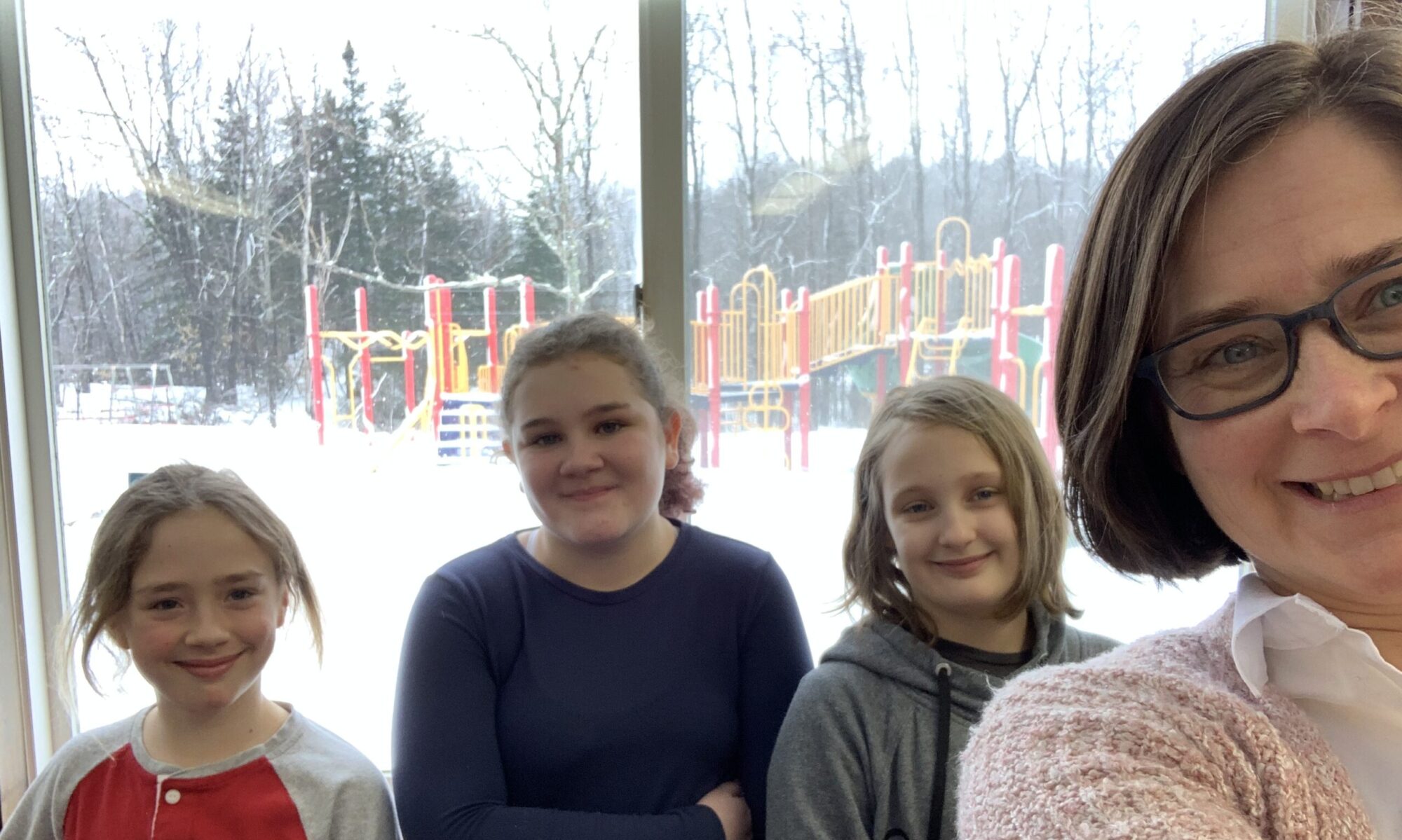

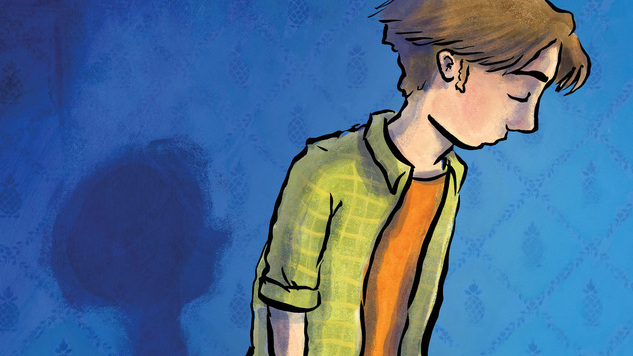
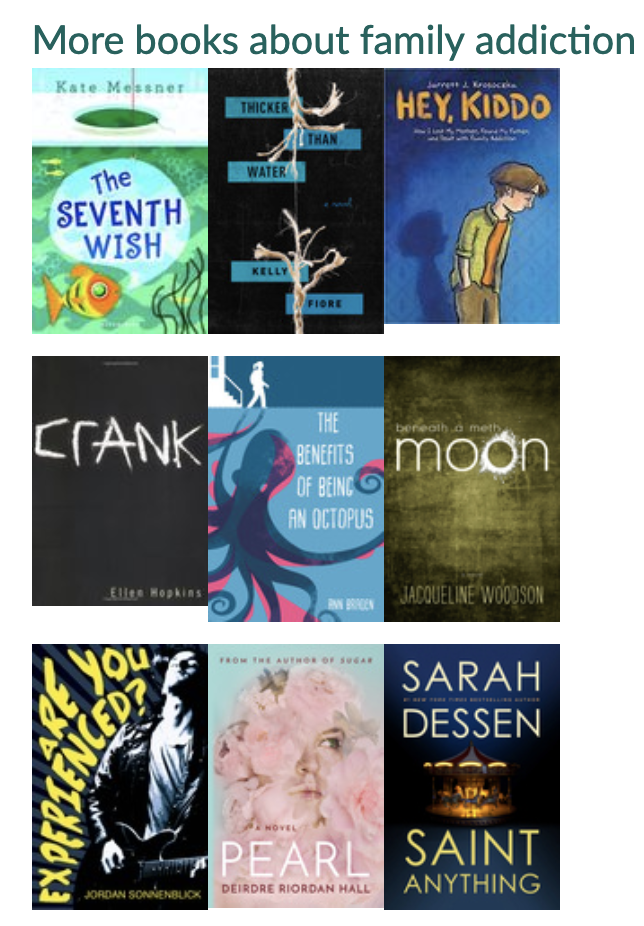
 As schools prepare to welcome students through their doors, many educators are researching how to talk with their students about the attacks in Charlottesville or Barcelona. Or how to respond to student concerns about diversity, tolerance and equity. Or, ulp, how to address this recent article by Wired, revealing that the state with the highest percentage of online trolls is… Vermont.
As schools prepare to welcome students through their doors, many educators are researching how to talk with their students about the attacks in Charlottesville or Barcelona. Or how to respond to student concerns about diversity, tolerance and equity. Or, ulp, how to address this recent article by Wired, revealing that the state with the highest percentage of online trolls is… Vermont.